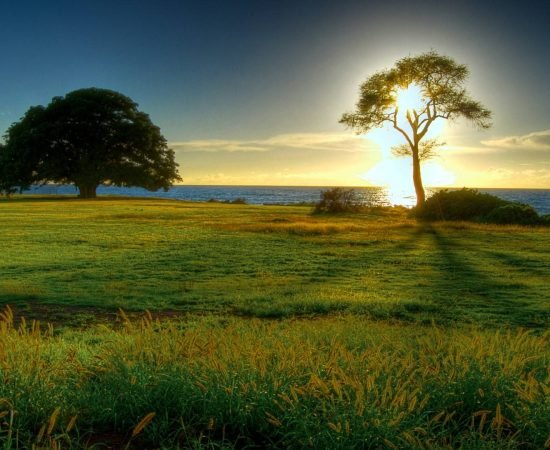I proclaim that this world is so stunning that I find it difficult to believe it even exists. Emerson observes that either doubt in nature’s very presence or emotions like astonishment, surprise, or wonderment can result from the beauty of nature. Regardless of the outcome, the beauty of nature can have a deep impact on our senses, those portals from the outward to the interior world. But what is it about nature and the things that make it up that makes us feel or say that they are lovely, frequently against our will?
Emerson says that “the simple perception of natural forms is a delight” as a possible response. The things that dazzle the senses come to mind when we think of beauty in nature, such as the prominence of a peak, the size of the sea, or the development of a flower’s existence. Often, the act of simply perceiving these objects makes us happy, and this emotional or affective reaction on our behalf appears to be essential to our perception of beauty. Therefore, there is a connection between this and the inherent worth of nature; Emerson writes:
”the sky, the mountain, the tree, the animal, give us a delight in and for themselves”
It seems to me that the majority of the time, we find these things to be lovely not for anything else they might bring us, like a piece of furniture or a “delicacy” to be eaten, but rather for the way that the shapes of these things instantly strike us upon inspection. In fact, one might even argue that this appreciation of beauty serves as one of the foundations for the idea that nature is important because it is lovely.
Emerson seems to believe that there are other aspects of nature that are just as beautiful as specific ones. Every environment, according to him, must be attractive in order to exist, and beauty “breaks in everywhere.” The Northeast is slowing emerging from a lengthy winter, and I believe Emerson would find the laments about what we have “endured” to be misguided:
”The inhabitants of the cities suppose that the country landscape is pleasant only half the year….To the attentive eye, each moment of the year has its own beauty, and in the same field it beholds, every hour, a picture which was never seen before, and which shall never be seen again.”
Even when the river’s water is frozen and everything appears to be stagnant and unmoving for a while, a close viewer of nature can still see a river in continuous change. The eye that understands how to search for it can find nature’s beauty anywhere and at any moment. In the lines of this diary entry, we can hear Emerson arguing with himself about this particular issue:
”At night I went out into the dark and saw a glimmering star and heard a frog, and Nature seemed to say, Well do not these suffice? Here is a new scene, a new experience. Ponder it, Emerson, and not like the foolish world, hanker after thunders and multitudes and vast landscapes, the sea or Niagara.”
So, if we agree that nature or some parts of it are lovely, we might consider why we feel this way about nature. Emerson claims that the fact that nature is living, moving, and reproducing makes it lovely. In opposition to the static or deteriorating condition of the overwhelming majority of man-made objects, we see progress and development in living things in nature. More generally, he writes: “We ascribe beauty to that which…has no superfluous parts; which exactly answers its end; which stands related to all things”. He claims that superfluous elements are absent from natural structures, a claim that has generally been supported by the development of biology. Furthermore, he asserts that any improvement in an object’s capacity to accomplish its objective—whether it be a work of human art or a living thing—means that it has become more beautiful. Therefore, Emerson may provide the tools we need to view evolution and the need to live as a beautiful rather than an ugly process, one that is guided by rules that tend to improve reproductive success and that we can comprehend through observation and research. The relationship between what we consider to be a person and the rest of nature is also a characteristic of the lovely, according to Emerson. The ability to “suggest relation to the whole world, and thus lift the object out of a pitiful individuality,” is what this entails. In nature, there aren’t any people who are completely autonomous of their surroundings; instead, everything is intricately linked to its surroundings in ways that are still unclear.
”Nothing is quite beautiful alone: nothing but is beautiful in the whole.”
These aesthetic characteristics all appear to transcend the initial perception of sensible forms that we began with, and what they demand is the same thing that acted as the foundation for truth and virtue in nature.
Emerson proposes that in addition to the direct experience of beauty based on observation, the beauty of the world may also be regarded as an intellectual entity. The pursuit of beauty “takes us out of surfaces, to thinking of the foundations of things,” the author says. In other words, because of the world’s rational organization and our capacity for mental comprehension of that structure, we can also find the world to be lovely. Consider the symmetrical design of a diamond, a snowflake, or a nautilus shell, for starters. Or take into account the intricacy of the reality that the reintroduction of the wolf in Yellowstone National Park altered the path of the rivers as a result of a trophic cascade, or chain reaction of cause and effect through the food web. This reinforces Emerson’s emphasis on the interconnection between all members of the natural world; as observers of nature we are confronted with one giant, complex process that isn’t of our own making, but that we can also understand, and get a mental grasp on, even if only partially, and be awe-struck in that process of understanding.
Thus, just like the instant beauty of observation, the beauty of the intellect has an affective or emotional component. The objects that we can wonder at and feel reverence toward in these two ways are taken away if we destroy the natural world. And this intellectual sense of beauty may strengthen our belief that nature has worth in this context as well—but a deeper kind of value, the intrinsic value I discussed in the previous essay. Here, nature is important not only because it is beautiful, but also because it has inherent worth, rooted in its comprehensible structure. So, kindness and beauty in nature are closely related. We can discover an objective foundation for goodness and beauty in nature, namely its understandable structure, but we can also recognize that nature is useful and lovely for us, thanks to the unique tools that nature has provided for managing the outside world.
Therefore, what gives nature its inherent worth and serves as the foundation of truth is also what gives it its aesthetic appeal. These three facets of nature are tied together by Emerson himself:
”He should know that the landscape has beauty for his eye, because it expresses a thought which is to him good: and this, because of the same power which sees through his eyes, is seen in that spectacle”
Nature is the source of truth, virtue, and beauty because of its understandable structure and because it gives rise to organisms like us who can identify that structure. This is the unified theory of nature that I set out to explain in the first article. Additionally, this perspective on nature includes an innate need to defend what is right, noble, and lovely. These are the things that humans look for and strive for, but they are already right in front of us if we would just tune our ears to the ground.
Even though I’ve been promoting a way of looking at nature that is founded on its understandability, we are still very far from being able to control the vastness of nature with our thoughts. “The perception of the inexhaustibility of nature is an immortal youth,” says Emerson. Let us continue to enjoy our close contact with nature even as we endeavor to learn more about her mysteries. Let us maintain our sense of wonder, just like a young kid on the beach or climbing a tree. Let’s hang on to that experience and struggle to preserve the conditions that made it possible, for both the child inside each of us and the generations to come.




